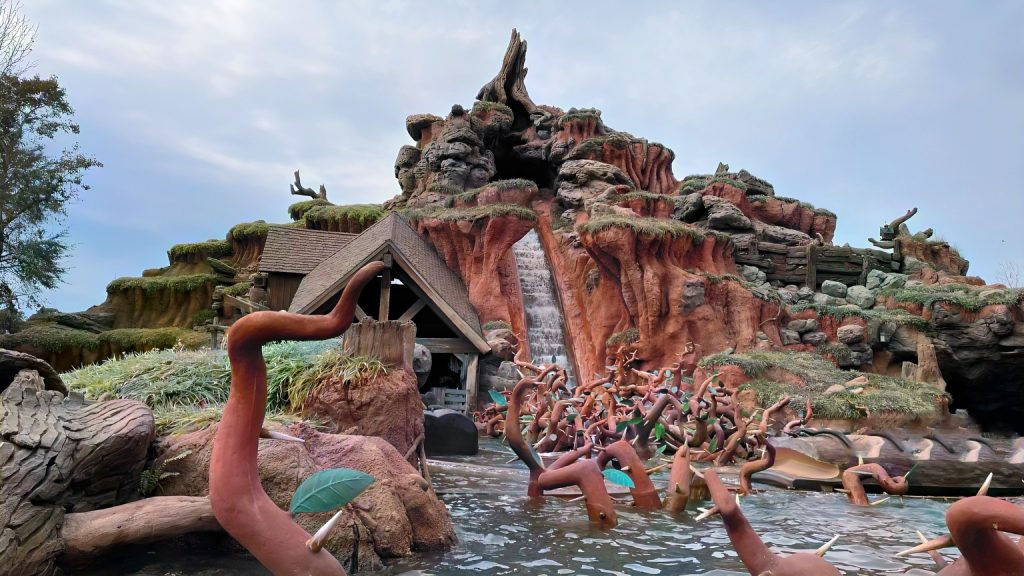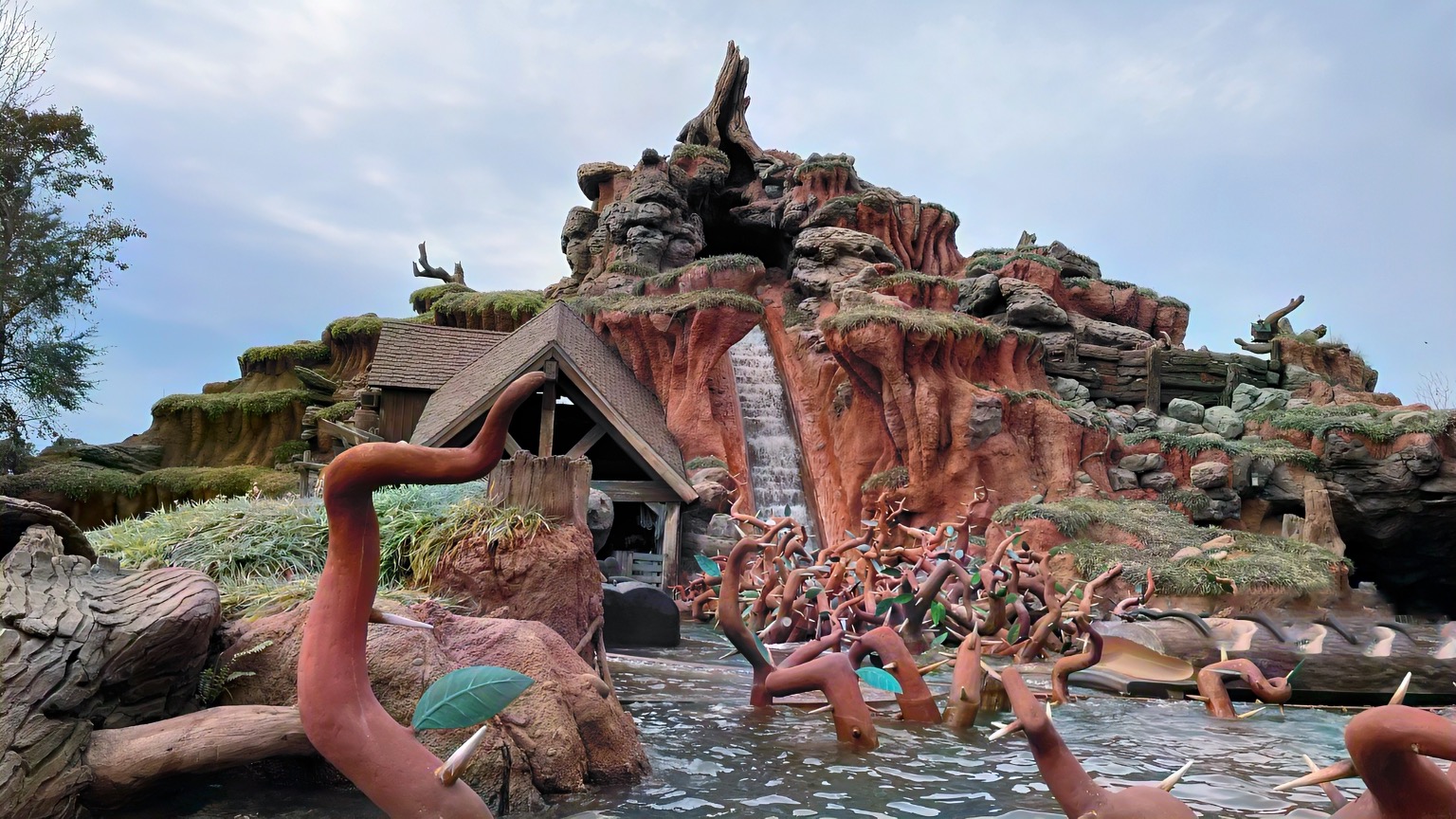
There’s nothing like going on Splash Mountain after a long day at Disney and getting your clothes soaked––but that’s not what makes the experience. For me, it’s the combination of thrill and cuteness that made it my favorite ride.
Splash Mountain was a log-flume ride that featured a 52.5-foot drop and a plethora of audio-animatronic animals. On Jan. 23, the characters of the Briar Patch moved along for good. The ride will be rethemed to Tiana’s Bayou Adventure, featuring characters from the 2009 film “The Princess and the Frog” preparing for a Mardi Gras celebration.
This is good news, especially because, until recently, Disney films lacked diversity and most of the characters featured in attractions were white or otherwise furry animals.
Anika Noni Rose, the voice of Princess Tiana, shared: “It is really exciting to know that Princess Tiana’s presence in both Disneyland and Magic Kingdom will finally be fully realized!”
Even though Princess Tiana spends most of the film as a frog, she is the representation Disney Parks need right now. And how appropriate that she should become the star of a ride previously inhabited by characters from a banned Disney movie.
Splash Mountain’s Source: Song of the South
In the past few years, I’ve heard many people say they would never ride Splash Mountain again because they heard that it is racist. While the matter of the ride itself being racist has been debated, the film on which the ride is based is racist—I’ve seen it.
After its debut in 1946, “Song of the South” was re-released in theaters for several decades, but it was never released on home video. According to current Disney CEO Bob Iger, the film will never be released on their streaming service, Disney+.
The film is based on stories written by Joel Chandler Harris, which were appropriated from Black folktales. These short, moralistic tales starred animal characters living on a Briar Patch, narrated by a fictional black man called Uncle Remus who spoke in an inauthentic and offensive dialectic. The stories reached a young Walt Disney, who regarded them as the “greatest American folk stuff there is.” Oof!
The film, a hybrid of live action and animation, follows seven-year-old Johnny who is visiting his grandmother’s plantation. There, he meets Uncle Remus, who tells him stories about Br’er Rabbit overcoming challenges that seem to parallel Johnny’s own troubles. The stories are thought to be a metaphor for slavery, with Br’er Rabbit representing a clever runaway slave, outwitting the foolish Br’er Fox and Br’er Bear who represent the slave owners.
One of the film’s most memorable moments is a scene where Johnny, played by child actor Bobby Driscoll – who would later become the voice of Peter Pan – skips down the road holding hands with a Black child of about the same age. Despite not being of the same race, neither boy cares; they are just happy to be with one another. However, there is no evidence to suggest that Disney set out to make a film with anti-racist propaganda; in fact, I think he was blinded by an idealized Americana.
Setting the film on a plantation in the Reconstruction Era was, I believe, Walt Disney’s way of creating a utopia where everybody could be friends. Intentions aside, this doesn’t erase the fact that many groups, including the NAACP, criticized the film from the beginning, saying that the production, “helps to perpetuate a dangerously glorified picture of slavery” and “gives the impression of an idyllic master-slave relationship which is a distortion of the facts.”
James Baskett, who starred in the film as Uncle Remus and the voice of Br’er Fox, received an honorary Academy Award for the film in 1948, despite not attending the film’s premiere in Georgia due to segregation laws.
“I believe that certain groups are doing my race more harm in seeking to create dissension than can ever possibly come out of Song of the South,” said Baskett in regard to the film’s controversy in 1947.
The film also starred Hattie McDaniel, the first Black entertainer to win an Academy Award. McDaniel won Best Supporting Actress at the Oscars in 1939 for “Gone With The Wind.” In a 1947 interview on the topic, McDaniel stated, “If I had for one moment considered any part of the picture degrading or harmful to my people, I would not have appeared therein.”
The Attraction
Splash Mountain, which originally opened in Disneyland in 1989, was designed by Disney Imagineer Tony Baxter as a way to entice guests to spend more time in the Bear Country section of Disneyland, home to only one attraction at the time: The Country Bear Jamboree. The attraction later came to Walt Disney World and Tokyo Disneyland in 1992. Most of the ride’s animatronics were recycled from an abandoned Disneyland attraction, called America Sings, which operated from 1974 to 1988 and contained musical eagles, alligators, raccoons, and other critters deemed American.
The original title for the concept was Zip-A-Dee River Run. Former Disney CEO Michael Eisner suggested the name Splash Mountain in an effort to promote the 1984 mermaid film “Splash,” starring Tom Hanks and Daryl Hannah, despite having no ties to the ride.
I am puzzled by the fact that Disney executives greenlit a ride based on a film they knew was problematic and regarded as racist by many organizations. What kind of cross promotion is that? Perhaps the change was already in the works, but the Black Lives Matter protests in 2020 officially spurred Disney Parks into announcing the end of Br’er Rabbit.
Br’er Rabbit’s entire existence within Disney’s domain is being removed, including the bronze statue in front of Cinderella’s Castle. Even “Zip-A-Dee-Doo-Dah” — the film’s main song, which received the Academy Award for Best Original Song at the 1948 Oscars and has been used as a staple Disney song for years — was removed from Walt Disney World’s Festival of Fantasy Parade and other Disney park locations. Perhaps this is for the best; after all, once the ride is changed, far fewer people will unwittingly celebrate “Song of the South” when admiring Br’er Rabbit.
Tiana’s Bayou Adventure will use the same track as the current ride, which means that it will most likely contain the same balance of cute and thrill while also promoting themes of diversity and inclusion.
Splash Mountain closed in Walt Disney World on Jan. 23, and will close in Disneyland later this year. At this time, there are no plans to retheme Tokyo Disneyland’s Splash Mountain. Tiana’s Bayou Adventure is expected to open in both Disneyland and Walt Disney World in 2024.
The opinions on this page do not necessarily reflect those of The Sandspur or Rollins College.
Have a differing opinion? Send us your responses. We want to hear your voice.






Comments are closed.